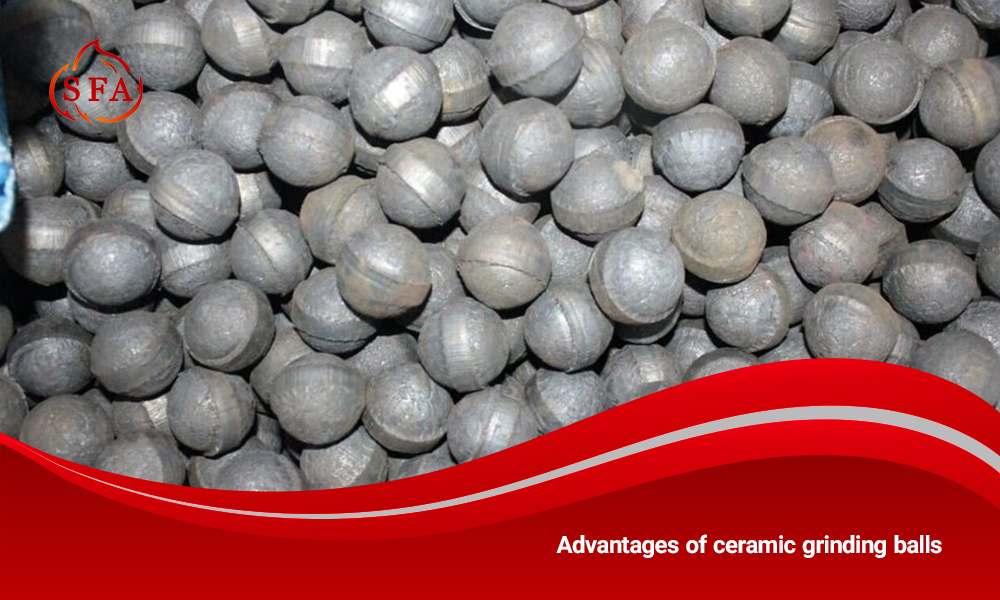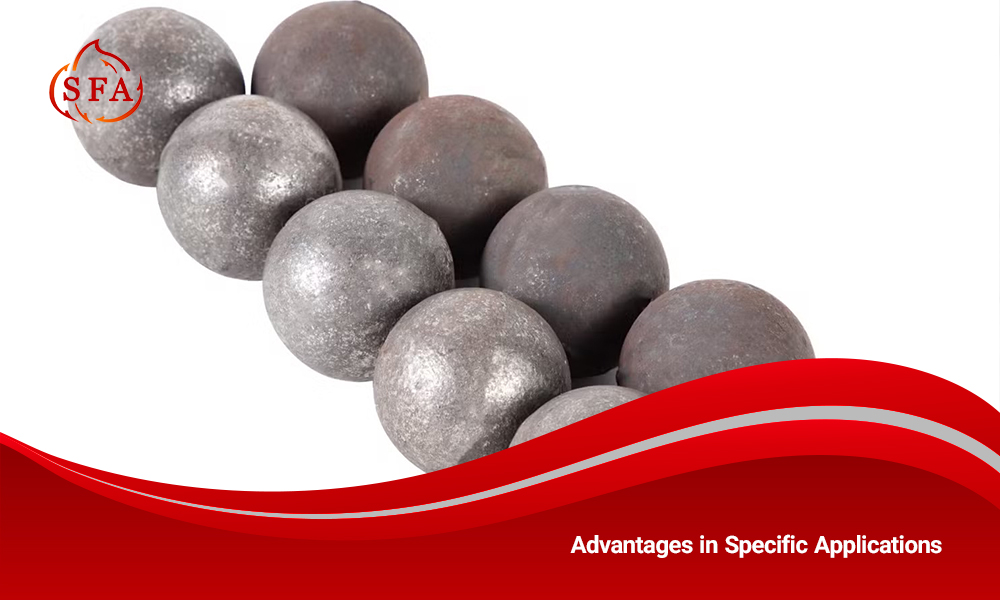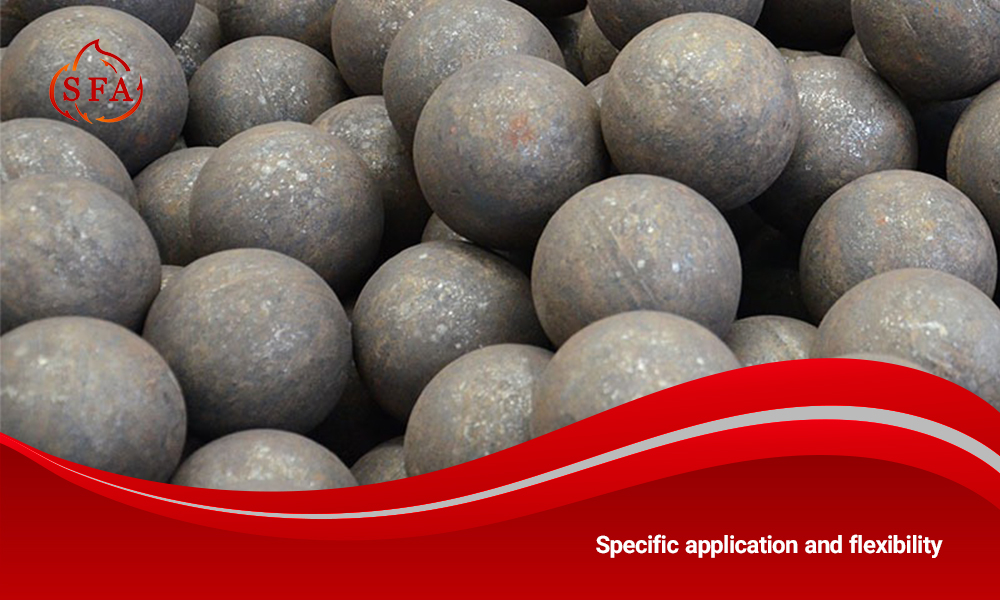

What Are the Advantages of Ceramic Grinding Balls
In many industries, especially cement, mining, chemical, and pharmaceutical, grinding balls play a key role in crushing and grinding raw materials. They facilitate mill operation by reducing particle size, homogenizing the mixture, and increasing the specific surface area. Therefore, the material and quality of the balls directly affect efficiency, energy consumption, and product quality. In this Sepahan Foolad Atashgah article titled “What Are the Advantages of Ceramic Grinding Balls,” we examine ceramic grinding balls, their advantages, and their specific applications. We also compare them with steel balls, considering Iranian market conditions and industrial experiences.
What are ceramic grinding balls and how do they differ from steel balls
Manufacturers usually produce ceramic balls from materials such as alumina (aluminum oxide), zirconia (zirconium oxide), or silicon nitride. These materials offer very high hardness, excellent wear resistance, and remarkable chemical stability. In contrast, producers make steel balls from carbon, manganese, or chromium steels. Steel balls are suitable for heavy grinding and grinding hard materials due to their high density and hardness. Of course, steel balls are heavier and may introduce some metal contamination (such as iron) into the product when worn.
On the other hand, ceramic balls do not cause any metal contamination due to their neutral chemical composition. In short, ceramic balls are “harder”, “lighter” and “more non-reactive” than steel balls, while steel balls have higher impact resistance and density. The choice between these two materials depends on the production line conditions and the quality requirements of the final product. For example, precision and sensitive industries such as pharmaceutical, food or paint, where metal contamination is a risk, usually use ceramic balls. In contrast, operators in cement and mining plants widely use steel balls when handling hard materials that require intense grinding.
Main advantages of ceramic grinding balls
Abrasion resistance and long service life
One of the most important advantages of ceramic balls is their very high resistance to wear. The hardness of these balls usually ranges from 7 to 9 on the Mohs scale, making them the second hardest material after diamond. For example, researchers report that alumina ceramics offer about 266 times the abrasion resistance of manganese steel. This feature makes the useful life of ceramic balls much longer than steel types and reduces the need for ball replacement or recharge.
In practice, ceramic balls consume much less per unit of production (kilograms per ton of product). For example, a comparison showed that steel balls used about 0.68–0.11 kg/ton, while ceramic balls used only 0.052–0.063 kg/ton. Although ceramic balls cost more per ton (about 35,000 yuan versus 7,800 yuan for steel), their lower consumption reduces total production costs by 65%. The longer durability of ceramic balls also reduces wear on other mill parts, such as liners, and lowers maintenance and downtime costs.
Click to read the article «Choosing the Right Steel Grinding Balls for Your Mill».
Product purity and non-contamination
The outstanding chemical feature of ceramic balls is their chemical neutrality. These balls do not react chemically with the process materials and therefore do not introduce any metal contaminants such as iron into the product. This advantage is vital for industries that require high-purity materials (such as pharmaceuticals, electronics, special ceramics, and paint). In fact, reports show that the use of ceramic balls in the fine grinding stage significantly reduces iron contamination in non-metallic products. In sensitive industries, the presence of a small amount of contamination can lead to product quality degradation or waste, so the absence of impurities is a strategic advantage for ceramic balls. Sepahan Foolad Atashgah has also emphasized that the use of ceramic balls can be useful in cement and sensitive material production lines, especially when product purity control is important.
Energy Saving
The lower density and smooth surface of ceramic balls lead to reduced internal friction in the mill. In other words, ceramic balls require less energy to achieve a certain speed inside the mill. For this reason, the grinding process with these balls proceeds faster and ultimately the energy consumption of the production line is reduced. Studies have shown that under the same grinding conditions, the total mass of the ceramic media is lower; therefore, the force required to rotate the mill is reduced and the consumption of electricity and fuel is reduced. On the other hand, the uniform spherical shape and maintenance of the internal hardness of ceramic balls result in higher grinding efficiency and more uniform distribution of impact energy, which contributes to reducing grinding time and increasing production capacity.
Weight and Effect on Efficiency
Ceramic balls are significantly lighter than steel ones. Their lower density (about 2.9–3.7 g/cm3 depending on the alumina percentage) means that each ball weighs less. The lower weight of the balls means that less force is required to accelerate and re-impact the material inside the mill. In addition to reducing energy consumption, this helps to increase the number of mill impacts per unit time, resulting in higher grinding efficiency.
In other words, lighter balls gain more momentum during rotation, which results in more efficient grinding of the material. Experience in the workshops also shows that the lower weight of ceramic balls, in addition to reducing the force on the bearings and the mill motor, also leads to a reduction in the force required to turn the balls after stopping. This effect is more pronounced in vertical and dry mills, because less centrifugal force is applied to the ceramic balls and less load is imposed on the mill surface.
Resistance to corrosive and acidic environments
Ceramic materials used in balls have very high chemical and thermal resistance. Many ceramics can withstand high temperatures (over 1000 degrees Celsius) and acidic or alkaline conditions without corroding or changing the structure. For example, alumina balls are said to have very good resistance to acids, alkalis and general corrosion. This feature is important in industries where corrosive and chemically corrosive materials are ground, such as glass production, chemical pigments or neutral carbon materials. In this situation, steel balls usually require a special coating or anti-corrosion alloy, while ceramics do not require additional coating due to their pure chemical structure. In short, ceramic balls with high corrosion resistance are a better choice in humid, acidic or alkaline environments.


Advantages in Specific Applications
The advantages of ceramic balls are more evident in some specific industries and applications:
Cement:
In the cement industry, operators often use carbon or manganese steel balls due to the high hardness of clinker and high energy requirements. However, in sectors such as secondary material grinding or micronized mills, where product quality control is crucial, ceramic balls are preferred. For example, Sepahan Foolad Atashgah notes that ceramic balls are used in lines where “metal contamination must be reduced.” In general, steel balls perform better at high operating pressures, but in a phase of production where product fineness is important, ceramic balls can help reduce liner wear and provide higher purity.
Ceramics and Tiles:
In the production of tiles, industrial ceramics and glazes, 65% or 92% alumina ceramic balls play a key role. These balls pulverize raw materials (kaolin clay, silica, calcium carbonate, metal oxides). The white color of alumina balls ensures that the color of the fired materials remains pure and no metal impurities enter the glaze. In addition, the high hardness and near-zero water absorption of ceramic balls ensure the uniformity of the final powder. In the paint and glaze industry, proper particle fusion and no color change resulting from grinding materials with ceramic balls increase the quality of the final product.
Specialty minerals and chemicals:
Ceramic balls are widely used for grinding fine minerals, such as silicon carbide, zirconium oxide, and titanium powder, as well as specialty minerals like talc, graphite, and high-purity alumina. In the chemical industry, their chemical neutrality makes them ideal for grinding active minerals and pulverizing pure chemicals. For example, Chemshun reports that alumina balls are mainly used in mills for processing zirconium, alumina, quartz, silicon carbide, and other minerals.
Paint and Pigment:
In the paint industry, the quality of the final product depends on powder uniformity and the absence of chemical contamination. Ceramic balls are used to grind pigment powder and paint paste because of their smooth, chemically neutral surface. Using these balls improves pigment dispersion and ensures a uniform paint shine without increasing unwanted metal ion concentration.
Pharmaceutical and food industry:
In pharmaceutical and food production lines, any metal contamination is unacceptable. For this reason, ceramic balls are often used in pharmaceutical and food processing mills to grind active ingredients and spices. These balls with high abrasion resistance allow grinding down to micron sizes and at the same time do not cause any chemical reactions with the materials, thus maintaining the purity of the formulation.
Technical and economic comparison with steel balls
From a technical and economic perspective, the advantages and disadvantages of the two types of media should be weighed:
Media cost and consumption:
Ceramic balls have a higher unit price, but their high strength reduces consumption significantly in the long run. Estimates indicate that, despite costing 4–5 times more (about 35,000 yuan for ceramics versus 7,800 yuan for steel), the total media cost drops because ceramics use only about one-tenth of the quantity. Also, the long life of ceramics means reduced recharge times and transportation costs. In contrast, steel balls are cheaper, but in the long run they may lead to frequent replacement and increase hidden maintenance costs.
Energy efficiency:
Ceramics, with their lower weight and lower friction, increase mill productivity and reduce energy consumption. Steel balls are heavier and require more energy to reach high speeds. However, they can break harder materials, making them suitable for heavy-duty mining or cement operations. In contrast, steel is less efficient than ceramic for precision grinding and fine crushing.
Equipment durability and wear:
As mentioned, ceramics have very high abrasion resistance. Using ceramics in grinding mills, especially vertical mills with special alloys, reduces wear on liners and other moving parts (molycop.com). Despite their high strength, steel wears faster in high-pressure environments and may break abnormally, which damages the grinding parts.
Product quality:
In the production of products where purity and final color are important, ceramics are good at preventing contamination. Steel can produce some iron oxide under certain conditions, such as high temperature or pH, which is undesirable in some applications. Although steel performs better in grinding tough materials, ceramic balls maintain more consistent product quality.
Specific application and flexibility:
Steel is more impact resistant and remains the primary choice in semi-self-compacting and self-compacting (SAG) mills. However, manufacturers can optimize ceramics for specific needs by combining different densities and shapes. For example, different densities of ceramics (from 2.7 to 3.7) allow for fine-tuning of the fall velocity and grinding kinetics.
In short, ceramic balls offer greater long-term economy due to their durability and purity, especially in precision applications. Steel balls also perform well in harsh, high-stress conditions that require rapid material breakage. The final choice should consider production line conditions and raw material characteristics carefully. It should also take into account economic and technical priorities.


Sepahan Foolad Atashgah Experiences and Observations
Sepahan Foolad Atashgah has gained valuable experience as a manufacturer and consultant in industrial grinding equipment. Our colleagues have reported that factories that have selected the right balls based on our technical advice have increased their grinding efficiency by up to 15%. This increase in efficiency has led to a reduction in production costs and improved product quality. Researchers report that replacing the balls with high-quality types, including ceramic in some cases, significantly reduces repair and line stoppage costs. This change also makes line operation smoother.
Sepahan Foolad Atashgah’s experience demonstrates that selecting the right ball is a long-term investment, not just a short-term expense. Our experts analyze mill capacity and raw material specifications to provide factories with the best option, both scientifically and economically. In sectors where product purity and quality are critical, such as ceramic and paint mills, we recommend using ceramic balls. These balls improve water absorption and help remove contamination.
In conclusion, technical and purchasing managers of factories should prioritize their specific applications and production needs. They should also consider factors beyond the initial price. Choosing a combination of steel and ceramic balls for different parts of the production line, or using advanced ceramics in specific mills, can improve efficiency and product quality. As Sepahan Foolad Atashgah and CEO advises, the key to success is to consider all technical and economic aspects and consult with experts in the field.
Conclusion:
Ceramic grinding balls are a smart choice in many specialized applications due to their high abrasion resistance and long durability.
They also offer lower weight and chemical purity. These pellets offer significant technical and economic benefits, especially when end product quality and energy consumption are important. By taking these benefits into account, production line technical managers can reduce costs.
They can also optimize unit performance by making informed pellet selections.


